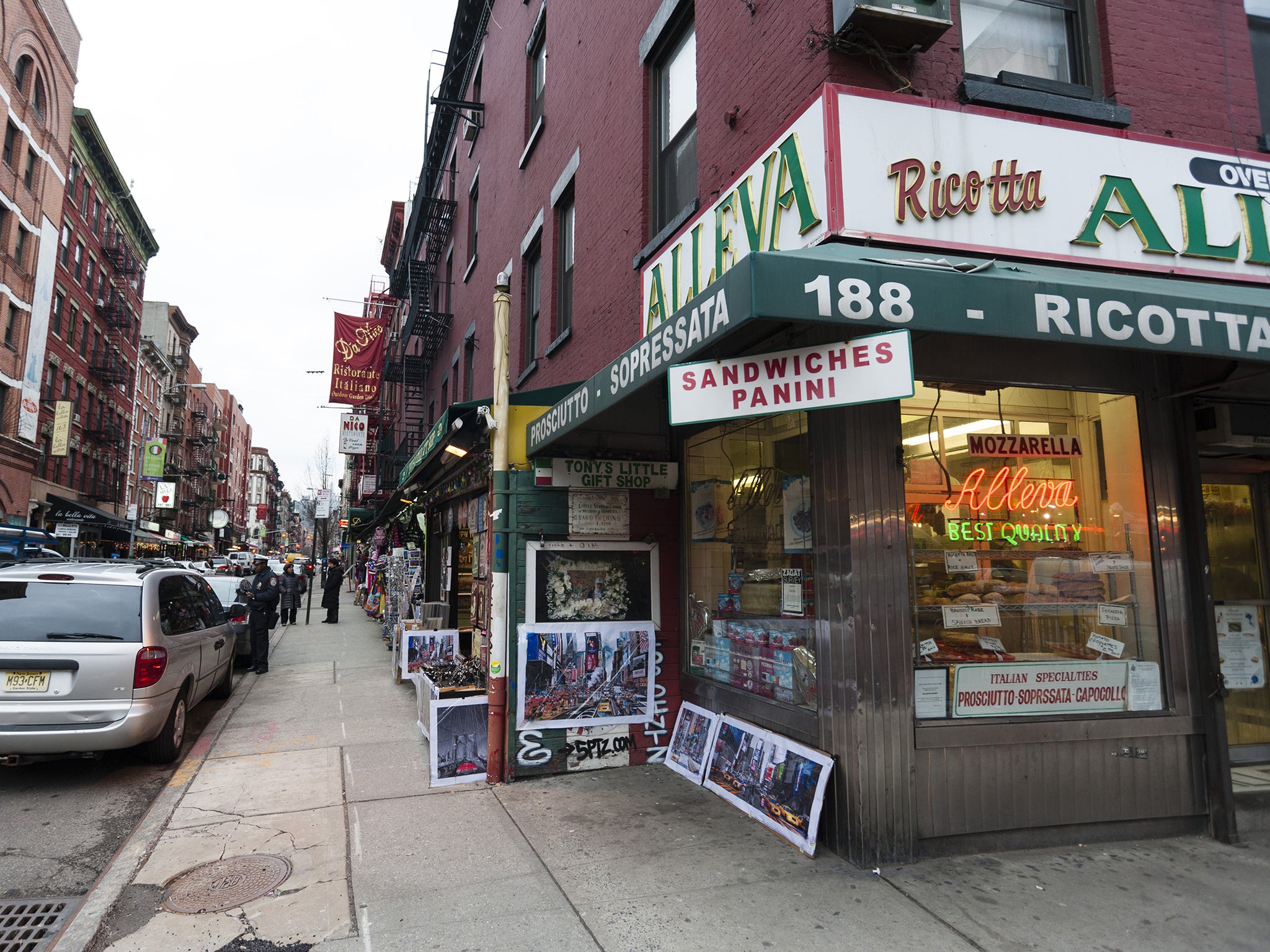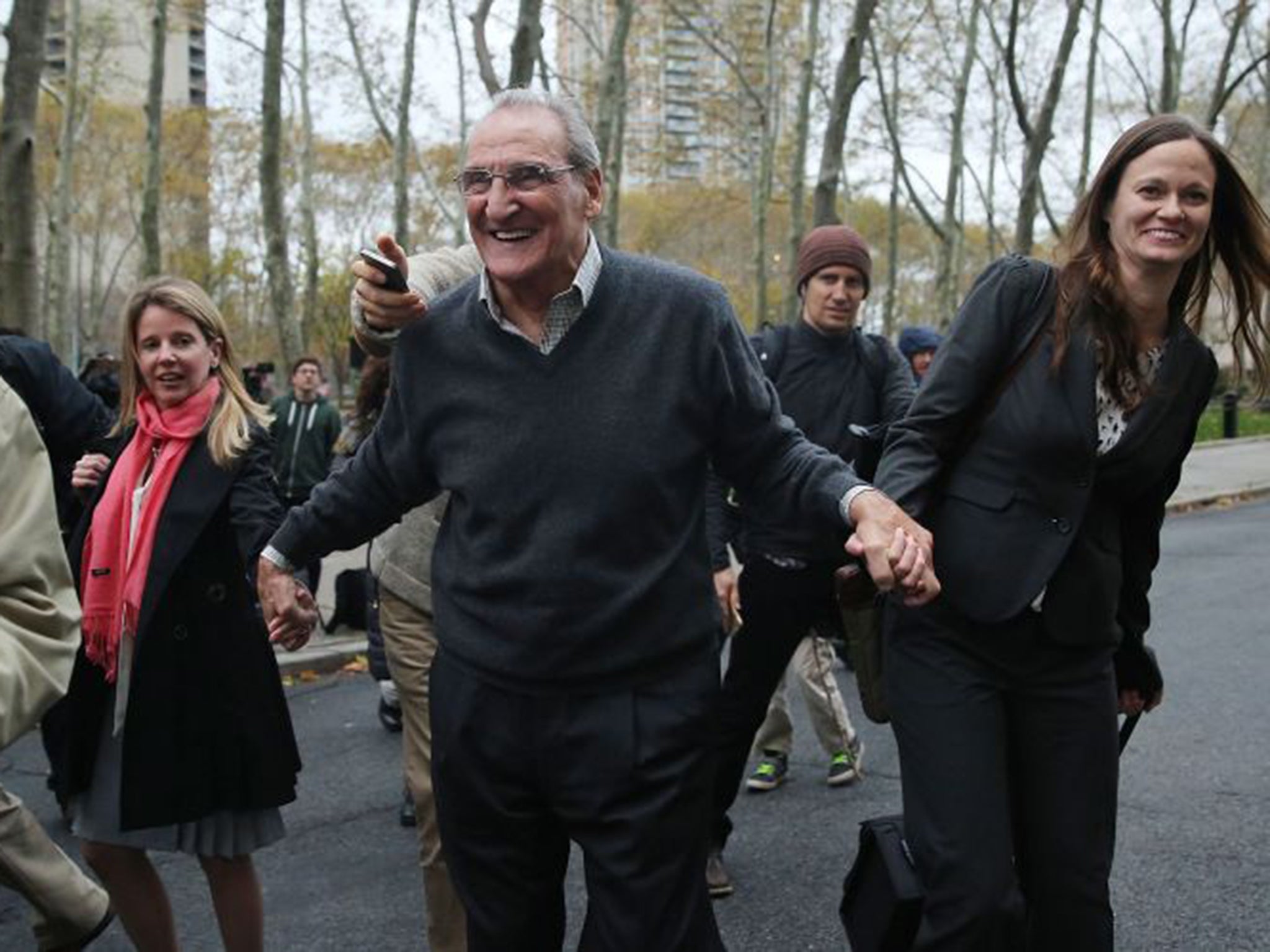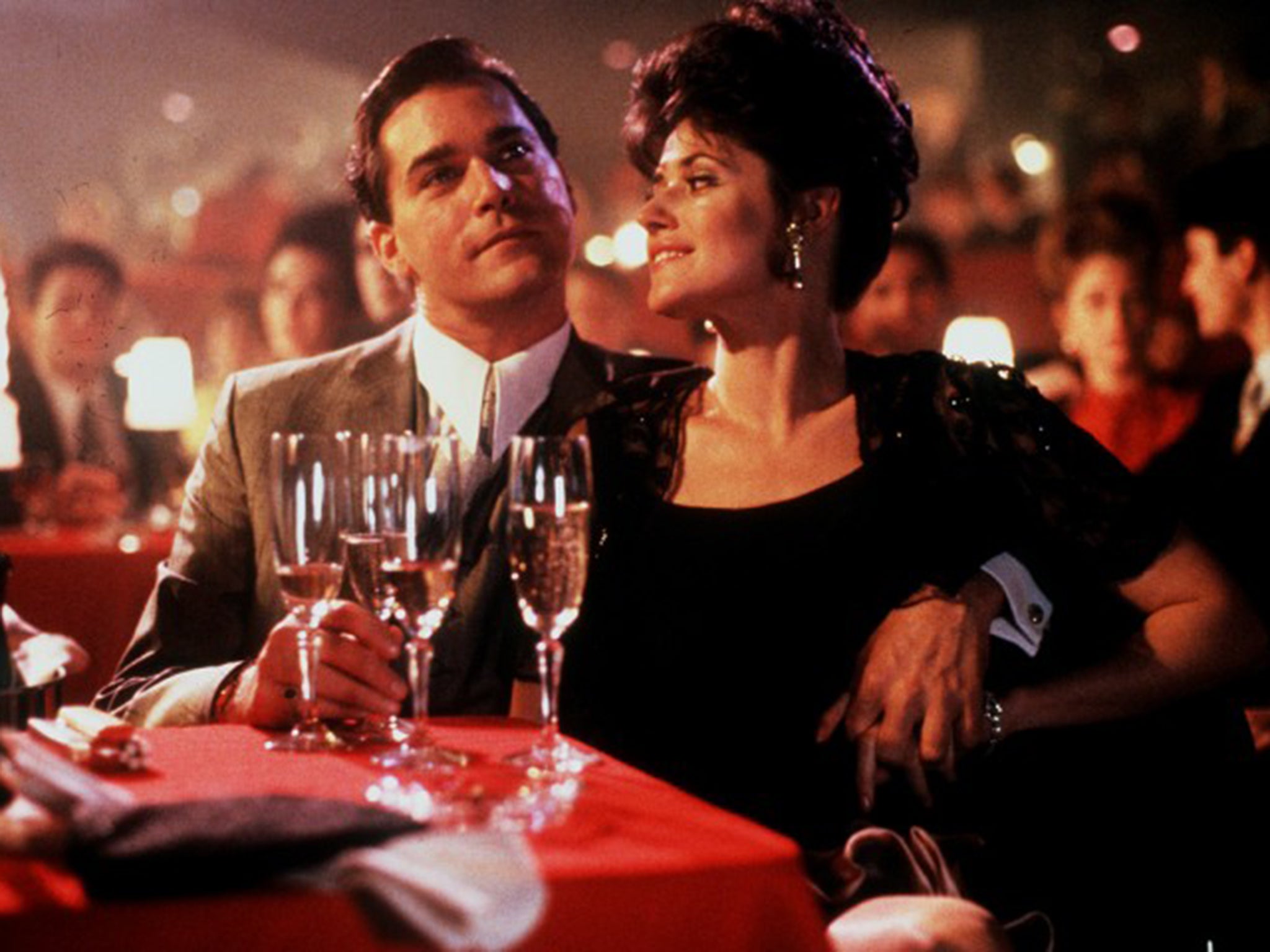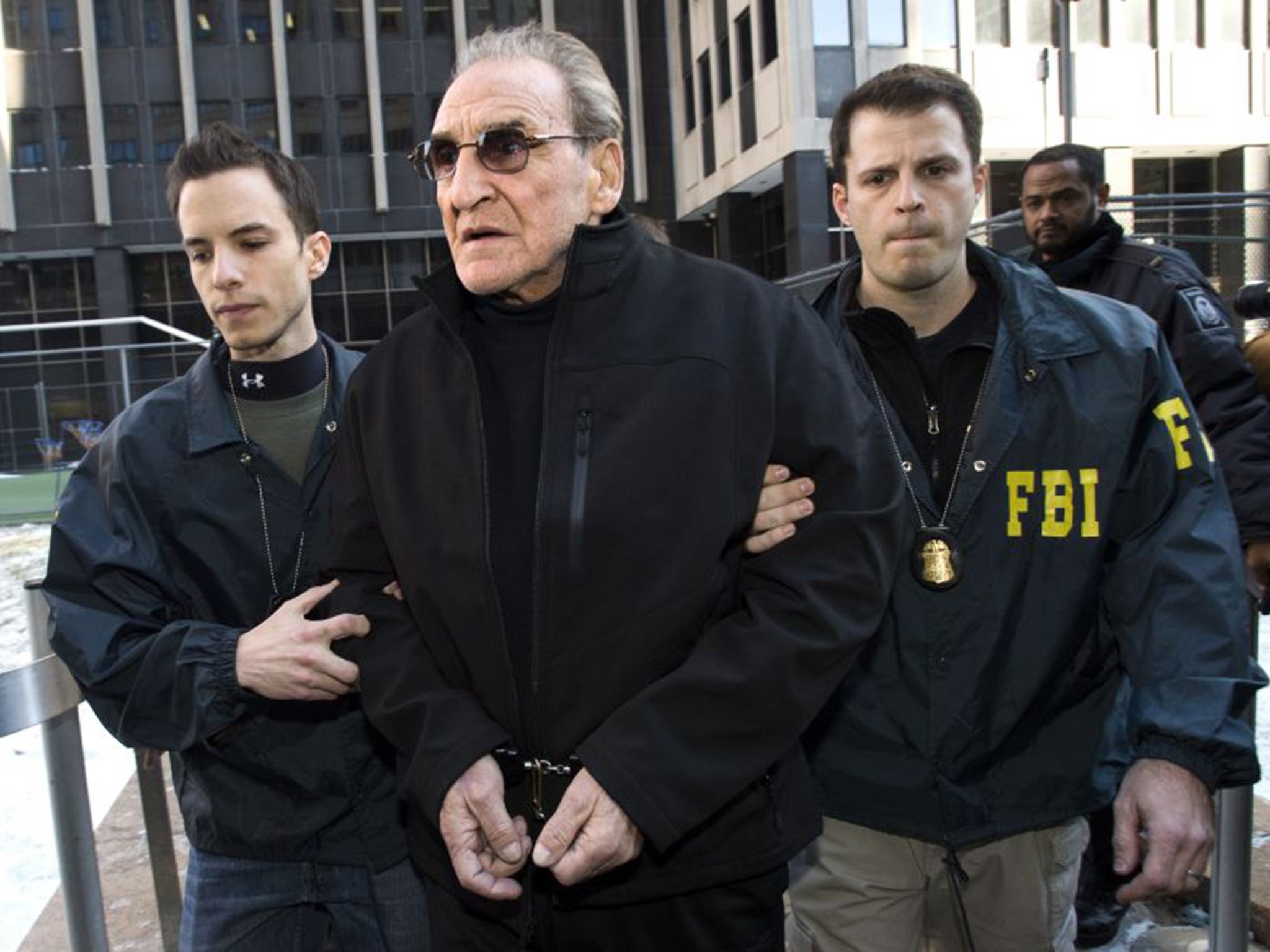Little Italy: End of an era for American Mafia as hipsters tour New York City streets once walked by wiseguys
The New York mob isn’t what it used to be and – in the wake of ‘the last old-school’ Mafia trial into the infamous Lufthansa heist – you are more likely to find hipsters and tourists than wiseguys on the streets today

Last month, a New York jury reached a verdict regarding the Lufthansa heist, the notorious theft of $5m in cash and nearly $1m in jewels from a Lufthansa terminal at John F Kennedy International Airport in 1978.
The crime was immortalised by the movie Goodfellas, in which gangster Jimmy Conway (Robert De Niro), working off information passed to him by Henry Hill (Ray Liotta), masterminded a late-night burglary that made everybody millionaires – even the guitarist from their favourite nightclub (Samuel Jackson) – without firing a shot.
The defendant in the trial wasn’t of any of those guys, however. All of them are dead. The defendant was Vincent Asaro, 80, who wasn’t even mentioned in the film. A real-life mobster from Queens, Asaro unwisely talked about the heist with his cousin Gaspare Valenti, who was wearing a wire.
Had he been convicted, Asaro would have been the first alleged Mafioso to face punishment in connection with the robbery – and only the second person, after Lufthansa cargo agent Louis Werner, to be convicted at all. But after a relatively short deliberation, the jury acquitted Asaro of racketeering conspiracy, as well as the unrelated murder of a warehouse owner in 1969.

The not-very-Hollywood trial in a courtroom just across the Brooklyn Bridge from Lower Manhattan was almost certainly the prosecution’s last chance to hang the Lufthansa heist on anyone, famous or not. The New York Post declared it the “last old-school Mafia trial.” The New York Times, more prosaically, suggested that the trial was a sign that the old rules of the New York mob, like not informing on each other, had been abandoned.
New York is by no means Mafia-free. But the mob isn’t what it once was, enfeebled by decades of police crackdowns, media attention and old age. The Mafia has been relegated largely to the realm of entertainment, just as Manhattan’s Italian culture has become a tourist attraction.
The city has changed dramatically since April 1972, when Joseph Gallo showed up for a bite to eat at Umberto’s Clam House on Mulberry Street in Manhattan’s Little Italy. “Crazy Joe” had spent a decade in prison for extortion, but he had shifted careers, working with actor Jerry Orbach on a script about his time behind bars tentatively titled “A-Block.”

The group who made the late-night trip to Umberto’s, though, was just him, his wife of three weeks, her daughter and a few friends. Oh, and his bodyguard, although that didn’t do him much good. In the middle of the meal, a man with a .38 came in and opened fire, hitting Gallo three times and the bodyguard once. Gallo managed to make it to the street before he died.
When Gallo died, organised crime in New York was already intertwined with the Hollywood image of the Mafia. Gallo was working on a screenplay; a New York Times story compared his death to a scene from The Godfather.
Umberto’s isn’t on that corner in Little Italy any more. It has moved around Mulberry a few times, eventually winding up across the street and up a few store fronts. The only traces of the restaurant where Gallo was shot are patches of concrete that fill the pavement outside a different restaurant, filling gaps that once held the letters U-M-B-E-R-T-O-S.
It’s one of the few corners that’s still part of Little Italy. Technically, the neighbourhood stretches across a dozen-plus blocks, from Canal to Houston, south to north, and from Mulberry past Mott to Elizabeth, west to east.
Walk along Mott or Elizabeth, though, and the fiction is quickly exposed; Chinatown has jumped Canal and Bowery streets and is a much bigger presence. From the north comes another menace: gentrification. Above Kenmare Street, you’re far more likely to find hipsters than wiseguys. Even the Little Italy parts of Mulberry Street are mostly a tourist trap, filled with souvenir shops and mediocre Italian restaurants. Little Italy is no longer itself.
In part, that’s because New York’s Italian population is fading. The 1920 census found that the city was home to more than 390,000 people who were born in Italy. In 1950, the Italian-born population was still more than 344,000. But by 1980, it was 156,000, with the number in Manhattan less than 9,000. According to the most recent census estimate, about 50,000 Italian natives now live in the city. There are still thousands of people of Italian descent, of course, but the culture – legal and criminal – is diluted.
Just like Mulberry Street.
“A lot of Americans. All the Italians are dead. Gone. Moved out of here,” said Vinny Sabatino, proprietor of Vinny’s Nuthouse, the last pushcart on Mulberry Street.
Mr Sabatino has been selling roasted nuts and traditional nougat since the early 1980s, taking over from his grandmother, Antoinette Sabatino, who opened the cart nearly a century ago.
He still lives on Mulberry, in the apartment where he grew up. But the neighbourhood has changed. Even the annual San Gennaro festival (think of the assassination in The Godfather, Part II) isn’t what it used to be.
“San Gennaro’s dying out. It’s not the same any more,” Mr Sabatino said. “We used to have buses, the old Italian people came from Philadelphia, from Pennsylvania. We don’t have that any more.”
The festival and the neighbourhood is more American. “Tourists,” he said, almost spitting. “The old generation’s gone.” Soon the Nuthouse will be gone, too; there is no heir apparent.
Out in Queens, near JFK where Asaro lived, it’s the same. The Mafia’s not gone, any more than Little Italy is gone. It’s just not the same.
In one of Gaspare Valenti’s recordings of Asaro, Asaro lamented the change. “I’m the only wiseguy left in my neighbourhood,” he said, according to the New York Daily News.
New York doesn’t have the crime it used to, and the crime that remains largely isn’t the mob busting skulls and skimming tills.

For younger New Yorkers, the Asaro case only became tangible once it was put in the context of Goodfellas. The Mafia is a movie thing, not a neighbourhood thing.
Next to Vinny’s Nuthouse is the Italian American Museum, opened in 2010 on the site of what was once an immigrant-owned bank. Among the displays of old documents and photographs from the area’s heyday is a tribute to Joseph Petrosino, the first Italian speaker to serve in the New York Police Department.
With his ability to speak the mobsters’ native language, Petrosino became one of the first law enforcement officials to tackle the Mafia. During an investigative trip to Sicily in 1909, he was shot and killed, apparently at the behest of organised crime in New York.
A small plaza just north of the old police headquarters near Little Italy where he worked is now named in memory of Petrosino. The old police headquarters itself has been converted to luxury condominiums. The good old boys are long gone – and unlikely to return.
© The Washington Post
Join our commenting forum
Join thought-provoking conversations, follow other Independent readers and see their replies
Comments